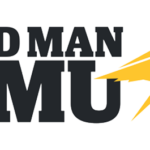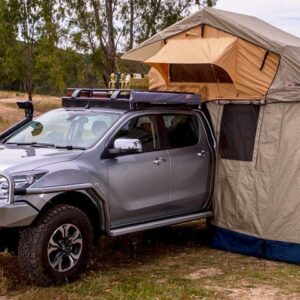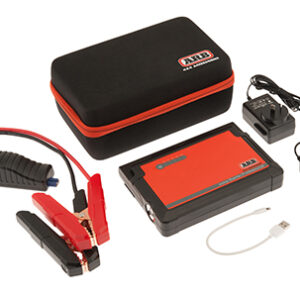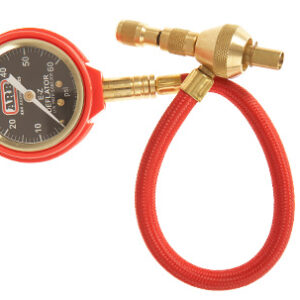Description
BP-51 OLD MAN EMU 4X4 SUSPENSION
The BP-51 is a user adjustable internal bypass 4WD shock absorber that delivers increased comfort and control; both on and off road.
All BP-51 shock absorbers are designed and manufactured in-house by ARB using state of the art machining and hard anodising equipment.
The body of a BP-51 shock absorber is manufactured using 6061 anodised aluminium to dissipate heat more efficiently than steel or alloy steel and provide superior corrosion resistance.
Extensive dyno, real world and destructive testing has been undertaken during the development process to ensure that reliability, longevity and performance all meet ARB’s impeccable standards.
What is a Bypass Shock Absorber?
Bypass shock absorbers have been used in off road racing for many years and are renowned for their ability to handle the toughest terrain and endure through the harshest abuse.
Whilst most shock absorbers use velocity sensitive damping (meaning the faster the shock absorber compresses and expands, the higher the level of damping force is), bypass shock absorbers take this to the next level by also generating damping dependant on the position of the piston within the shock absorber body.
Bypass refers to the ability of the hydraulic fluid to bypass the piston by being routed externally to the shock bore; creating a high level of comfort initially but increasing the damping forces as the shock reaches the end of its travel in both compression and rebound. In Old Man Emu BP-51 shock absorbers, the amount of bypass is adjustable so that it can be tailored to suit different terrain, speed and loads.
Internal V’s External Bypass
BP-51: RACE TECHNOLOGY CLEVERLY PACKAGED FOR EVERYDAY 4WDS
Traditionally, the bypass shock design incorporates a number of tubes that run external of the shock absorber body in order for the hydraulic fluid to bypass the internal piston.
This design has prevented bypass shocks from being incorporated into everyday vehicles without expensive modifications due to dimensional constraints; especially modern coil-over independent suspension. BP-51 uses a unique extruded alloy body where the tubes are replaced by passages within the shock absorber body, allowing it to fit into tighter confines such as inside a coil spring.
Greater Performance: The Benefit of BP-51
Whilst an Old Man Emu suspension system incorporating Nitrocharger shock absorbers is a vast improvement over standard suspension systems for both on and off road use, by design, there are always compromises between comfort and control.
Old Man Emu’s BP-51 high-performance bypass shock absorbers bring the latest in racing bypass technology to everyday 4WDers, giving the ability to customise their ride with user adjustable compression and rebound damping control while still being fully compatible with Old Man Emu springs and suspension related components.
You don’t need to be competing in off road events to appreciate the benefits of adjusting your ride for optimal performance when faced with challenging terrain, towing or carrying loads, and returning to the asphalt with a compliant comfortable ride.
What does BP-51 Stand for?
Bypass 51mm diameter bore.
The Benefits of an External Canister
All shock absorbers need some amount of airspace to allow the hydraulic fluid to expand and move properly, however, when the air mixes with the hydraulic fluid, it can cause it to aerate (foam) and therefore lose damping effectiveness. This most commonly happens in standard hydraulic shocks.
Nitrogen gas is used to replace air within a shock absorber to help control the flow of hydraulic fluid (this is because it is not readily absorbed into the fluid like air). Various shock designs do this differently.
Within a twin tube shock, the gas sits in the reserve tube to keep pressure against the fluid as it passes through the valving and prevents it from being dumped into the reserve tube.
A monotube shock uses a floating piston at the base of the piston bore to separate the hydraulic fluid from the gas, also preventing aeration. This design, however, reduces the travel of the piston within the shock body, affecting the overall travel of the shock.
Like a monotube shock, the external canister in a BP-51 utilises a floating piston to separate the hydraulic fluid and gas, however, it is contained within an external reservoir so as not to cause a restriction on the shock travel. The reservoir is large to handle the increased fluid volume in the shock and is remote mounted to aid fitting. Additionally, it can also help cool the hydraulic fluid as it is routed away from the hotter moving internal components.
BP-51 and Spring Selection
Whilst many aftermarket bypass type shock absorbers are not tuned to suit a particular vehicle or spring, Old Man Emu’s ride control engineers have spent considerable time refining the BP-51s to not only be vehicle specific but also matched to Old Man Emu spring selections. Unlike when fitting Nitrocharger Sport shocks, which are specifically tuned to match the selected spring, BP-51’s valving is designed to allow a greater level of personal tuning to match vehicle load and track terrain; with recommended settings available in the fitting and user guides.
Customers can use this as a starting point and then customise accordingly to suit their own personal comfort and driving style preferences.
Compression Rebound and Damping
WHAT IS COMPRESSION AND REBOUND DAMPING?
Damping refers to the slowing of the shock absorber’s oscillation. This is controlled by a series of valves that slow the movement of the hydraulic fluid through the piston. Valving controls the movement of the pistons during both the compression and rebound strokes.
WHAT EFFECT WILL THESE ADJUSTMENTS HAVE ON A VEHICLE?
Adjusting the compression valving has an effect on how comfortable or firm the suspension is when the suspension of the vehicle compresses. Too firm and the vehicle will feel every bump and ripple in the road surface as the shock tries to prevent the spring from freely compressing. Too soft and the ride will become more comfortable, however, more body roll can be felt when tackling corners and the vehicle may nose dive during braking, resulting in less control. The suspension may also easily bottom out on the bump stops.
Adjusting rebound valving effects the rate at which the shock allows the spring to return back to ride height once it has been compressed. Higher rate springs are used to maintain correct ride height when either accessories or greater constant loads are added to the vehicle. When these springs are compressed with greater load, the energy stored within the spring is also greater and requires extra damping control as it rebounds. Not enough rebound control may cause the shock absorber to top out, causing internal damage to the shock or allow the suspension to bounce numerous times after hitting an obstacle, resulting in less control of the vehicle.
Adjusting Shock Settings
If you have fitted your vehicle out with accessories that add overall weight such as a bull bar, winch, rear bar, long range fuel tank or drawer system, among others, the additional weight will have an effect on the ride and handling characteristics of the vehicle; resulting in the need for suspension with increased spring rates.
Whilst a tuned suspension where the shock absorber is matched to a spring rate will give greater comfort and control over a range of terrain types and load carrying requirements, these systems may offer a firmer ride than standard when unloaded (although giving better control).
If your vehicle spends a lot of time unloaded, the ability to decrease compression and rebound damping can give greater comfort on road. Whereas the ability to increase compression and rebound damping can benefit you when carrying larger loads or driving off road at greater speeds.
Please contact us for Price and Fitment
Other Products that may also interest you:









